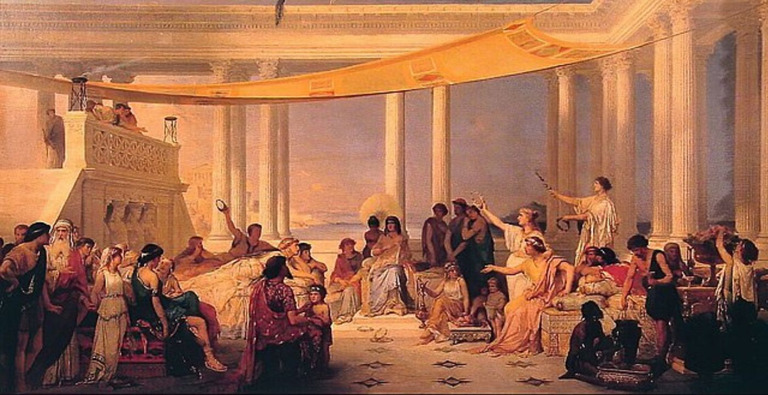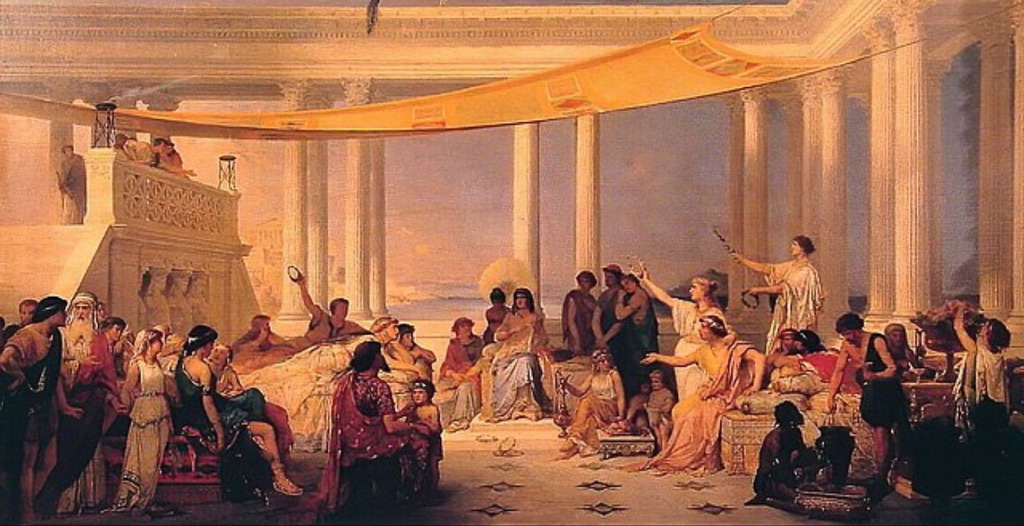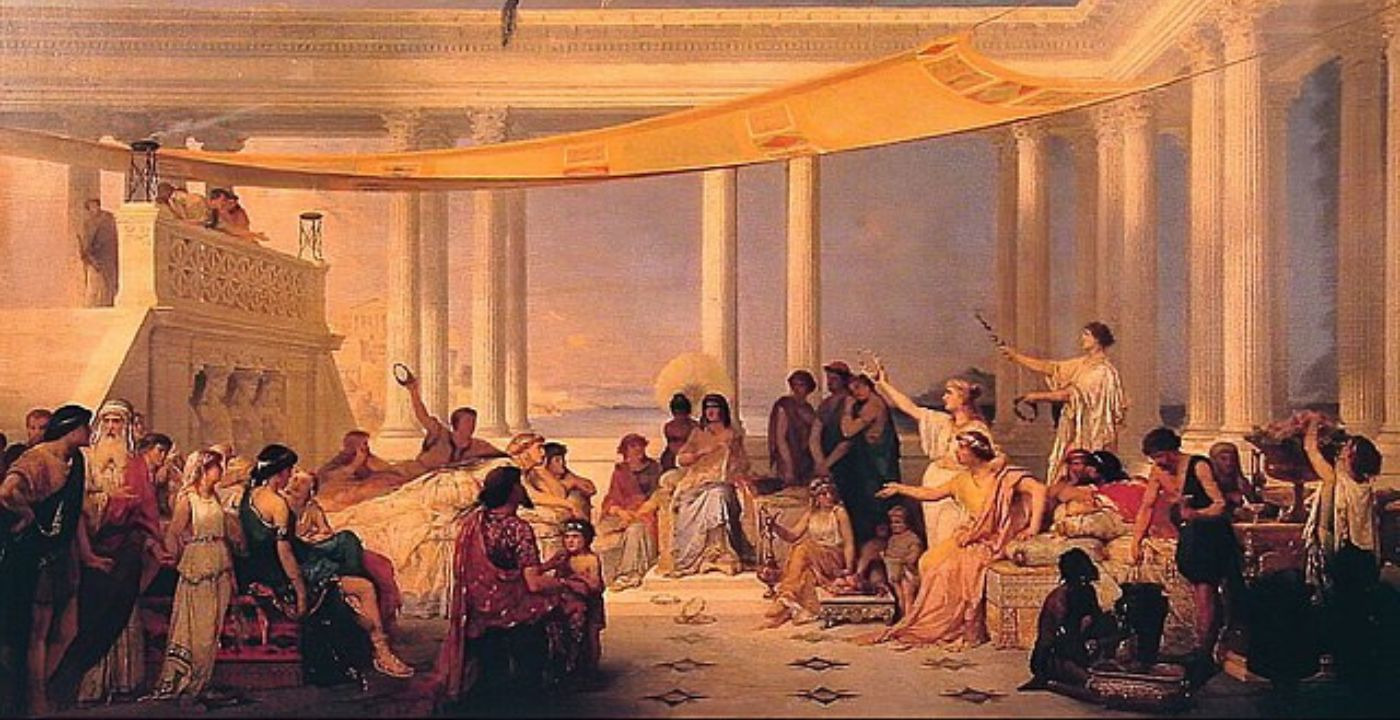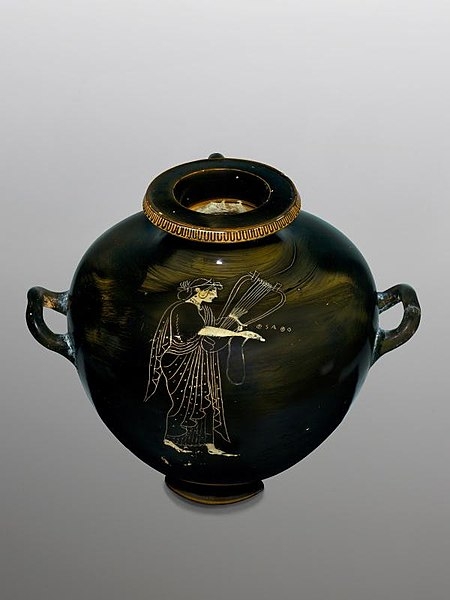Birth
Late 7th/early 6th century BCE
Education
UnknownDeath
Unknown. 6th century BCE; some sources say she was exiled to Sicily between 604 and 595 BCE.
Religion
UnknownSappho was a Greek lyric poet from the island of Lesbos, whose poetic influence and innovation persists today, despite only one of her poems surviving in its entirety. Her poetry is intimate, personal, and often about love. Her lyrics were written to be set to music, and she is remembered for her writing on women. Her home, Lesbos, is the source of the term lesbian, and the fragments of her lyric poetry span nine books and 10,000 lines. She is one of the Hellenistic Nine Lyric Poets.
Personal Information
Name(s)
Sappho
Date and place of birth
Late 7th/early 6th century BCE; island of Lesbos
Date and place of death
6th century BCE; some sources say she was exiled to Sicily between 604 and 595 BCE, for an unknown reason. Her place of death is unknown, though Menander was one of the first to invent the story that she committed suicide in modern-day Corfu, jumping off a cliff out of love for a ferryman named Phaon.
Family
Sappho’s parents are never mentioned by name in the surviving fragments, so nothing is known about them. In fragment 98, she invokes a memory of her mother, who seems to tell Sappho a story about her youth. Two brothers, Larichos and Charaxos, are mentioned by name in her most recently discovered poem, aptly called “The Brothers Poem.” In her poems Sappho praises Larichos, a wine pourer in Mytilene, but reprimands Charaxos, who apparently spent a handsome amount of money on a courtesan.
Marriage and Family Life
Almost all details about Sappho’s married life are unknown. Like her parents, her husband is not mentioned in the fragments. Some sources, including the Suda, claim that she was married to a wealthy man from Andros named Cercylas, but the credibility of this is hard to confirm, since it literally means “Little Prick from Man Island” and is likely derived from a comedy about Sappho. Such comedies exist from antiquity, though not the plays themselves. Two of her fragments mention a daughter named Kleis. In fragment 98, Sappho laments that she has no colorful headband for her daughter to wear, such as the kind Sappho’s mother told her she wore in her youth; fragment 132 describes her beautiful and beloved Kleis, whom she “would not trade for all of Lydia.”
Education
Though it is difficult to say anything definitive about Sappho’s education, her poems reveal an intimacy with the Homeric epics and with the larger tradition of Greek literature, mythology, and poetry.
Religion
As an ancient Greek, Sappho believed in a pantheon of divinities. She addresses poems to various goddesses, including Aphrodite, the goddess of love, whom she calls her “fellow-fighter” and entreats to help her win the heart of an indifferent young woman.
Transformation(s)
Unknown.
Contemporaneous Network(s)
Sappho’s fragments include the names of young girls, such as Atthis, Anaktoria, Gongyla, Megara, and Mika, in a variety of contexts. Sometimes she praises their beauty and grace; at others she mourns for their loss after getting married. We do not know her specific relationship to these women, but it is clear that she formed intimate bonds with a variety of other women.
Referenced in other female biographies
Boccaccio, On Famous Women (1360-74)
Christine de Pizan, City of Ladies (c. 1405)
Mary Hays, Female Biography (1803)
less
Significance
Works/Agency
Some sources confirm that Sappho’s lyric poetry filled 9 “books” (papyrus scrolls) in the Library of Alexandria and totalled around ten thousand lines, but her once vast corpus now exists almost entirely in fragments. Only a single poem, fragment 1, survives in its entirety. The poems were really songs intended to be set to music—accompanied by the lyre and often a chorus of dancing girls—and performed in public spaces. Sappho’s own literacy is, in fact, disputed. She is one of the few female voices from the ancient world to which we have access. In addition to her striking contribution to Greek literature, she is credited with the invention of the plectron (a tool used to pluck the lyre) and the pektis (a type of lyre).
Reputation
Sappho has been a sensation throughout history: an immediate star in the poetic galaxy. Along with her contemporary and fellow Lesbian Alcaeus, as well as seven other male poets, she was included in the Hellenistic canon of the Nine Lyric Poets. The philosopher Plato hailed her as “the tenth muse.” The geographer Strabo singled her out as a unique example of female brilliance: “Sappho [is] an amazing thing. For we know in all of recorded history not one woman who can even come close to rivaling her in the grace of her poetry.” Sappho is lauded by Longinus in his On the Sublime, a text that proved central to poets attempting to create their own beautiful works of art. In fact, it is due in large part to his liberal quoting of Sappho’s poems to illustrate certain aesthetic effects that certain lines of hers are preserved. The Roman poet Ovid may have written a poetic epistle from Sappho to Phaon, a ferryman who supposedly broke her heart and drove her to suicide, as part of his Heroides. Another Roman poet, Catullus, “translated” one of her most well-known poems into Latin, changing its meaning significantly.
Throughout the centuries, Sappho became the standard by which other learned women were measured. Giovanni Boccaccio, in his collection On Famous Women, includes an entry on Sappho, writing, “This young girl did not hesitate to strike the strings of the resonant cithara and bring forth melodies, something that seems extremely difficult even for the most skilled of males.” Christine de Pizan also includes a brief biography of Sappho in her City of Ladies, emphasizing her “superb intellect.” Women writing poetry in the Renaissance and early modern period were often compared to her, called, for example, “sister of Sappho.” The modernist poet HD visited Lesbos as a young girl and found her own voice as a female poet through Sappho’s fragments. Sappho’s poems, however fragmentary in nature, have always been known, quoted, and puzzled over, and her life has always been shrouded in mystery. Ellen Greene rightly observes that “each age, each generation invents its own Sappho.”
Legacy and Influence
The Sapphic meter, widely used by Roman poets such as Catullus and Horace, is named for her. The term “lesbian” is drawn from her island home of Lesbos, as Sappho writes a great deal about women and young girls in her poetry.
less
Controversies
Controversy
Sappho has, from the start, been a controversial figure due to the presence of women in her poems. The passionate intensity of her work led her to be mocked, censored, and mythologized by male critics and writers throughout history. In the introduction to her new translation of the fragments, Diane Rayor identifies four “modern reconstructions” of Sappho: as the leader of female choruses, as a renowned teacher of young girls, as the head priestess in a female religious community, and as the composer of songs for symposia. Her fragments provide only glimpses of her activities, so it is impossible to say which, if any, of these interpretations is fully correct. Studies of Sappho tend to become enmeshed in unanswerable, tricky questions of sexuality. Anne Carson writes, “Controversies about her personal ethics and way of life have taken up a lot of people’s time throughout the history of Sapphic scholarship. It seems that she knew and loved women as deeply as she did music. Can we leave the matter there?” Since so little is definitively known about her, scholars have a tendency to creatively fill in the gaps. What we know, or think we know, about Sappho is therefore mediated through competing lenses that can obfuscate her poetic genius. More is conjectured about her lifestyle than about her poems, which have much to reveal on their own terms.
New and unfolding information and/or interpretations
In 2014, Dirk Obbink claimed to have discovered two new fragments of Sappho, one the so-called “Brothers Poem” and the other a more complete version of the “Tithonus” or “Old Age Poem.” Recently the provenance of these fragments has been called into question and Obbink’s reputation has suffered a serious blow. Classicists still tend to agree that these are indeed Sappho’s verses, despite the dubious means by which Obbink acquired the fragments.
Feminism/Social Activism
It would not be appropriate to call Sappho a “feminist” as we currently understand the term, but she certainly made her voice known in a society that largely silenced its women, and she writes about her female companions in unapologetic, bold, and unforgettable verse.
less
Bibliography
Sources
Primary (selected):
Greek Lyric, Volume I: Sappho and Alcaeus. Edited by David A. Campbell. Loeb Classical Library: Cambridge, Harvard University Press, 1982.
Archival resources (selected):
Papyri housed at various locations.
Web resources (selected):
Dirk Obbink’s report on discovery of papyri with new poem: http://www.papyrology.ox.ac.uk/Fragments/SCS.Sappho.2015.Obbink.paper.pdf
Issues with the sources
Since the 9 volumes of Sappho’s poetry that were housed in the Library of Alexandria were destroyed, we are only able to work with fragments. Moreover, these fragments do not derive from a collection Sappho compiled herself: they are copies that date well after her period of flourishing. A large amount of guesswork has to be done when trying to transcribe the poems for editions and render them into English.
Carson, Anne. If not, winter. New York: Vintage, 2003.
Re-Reading Sappho: Reception and Transmission. Edited by Ellen Greene.
Berkeley and Los Angeles: University of California Press, 1996.
Women Writers of Ancient Greece and Rome: An Anthology. Edited by Ian Michael
Plant. Norman: University of Oklahoma Press, 2004.
Rayor, Diane. Sappho: A New Translation of the Complete Works. New York:
Cambridge University Press, 2014.
Snyder, Jane McIntosh. The Woman and the Lyre: Women Writers in Classical
Greece and Rome. Carbondale: Southern Illinois University Press, 1989.




Comment
Your message was sent successfully